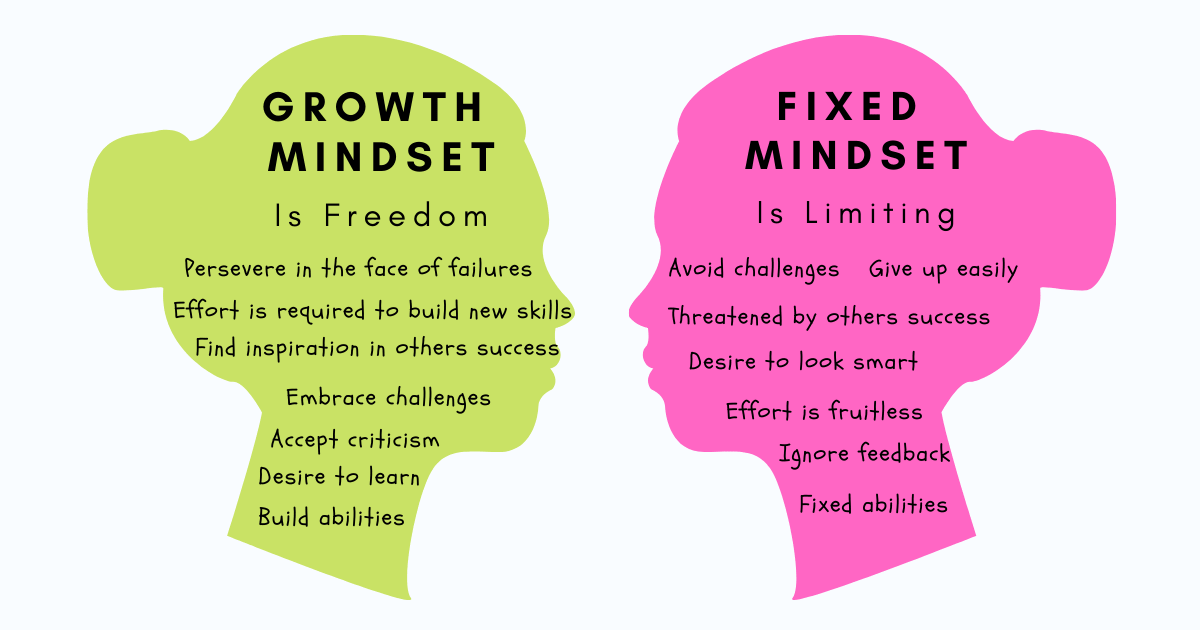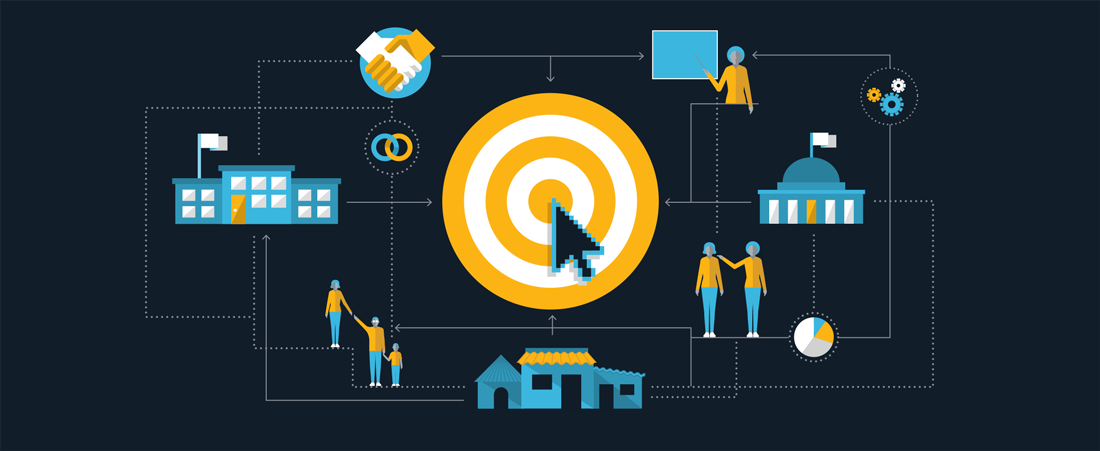why is the growth mindset so important
I believe having a growth mindset is critical for anyone who not only wants success, but happiness and confidence in themselves. With a growth mindset, you not only focus on what you have achieved, but also what areas you can improve. Too often, we base our value in how others perceive us which means focusing on what will lead to praise or other extrinsic motivations. Because of this fear of disappointing others and ourselves, we limit our intrinsic motivation to seek more knowledge, challenge ourselves, and face adversity. With a growth mindset, we can shift our focus from what we can and cannot do to how we can use our setbacks and mistakes as an opportunity to learn and do better.
how to incorporate the four steps?
It has been a challenge for me to change my mindset, but this is what I will do to incorporate the four steps.
First, I must acknowledge my fixed mindset (Jeffrey, n.d.). I have found myself sometimes getting caught up in my own anxiety and stress while trying to juggle work, school, and family. Even today as I began to brainstorm my growth mindset plan, I could not help but think about how my life was before I decided to go back to school to obtain my masters. I think about how comfortable and predictable my life was. Now that I have begun this journey, I cannot help but fear what my future has in store for me. It is an uncomfortable feeling, but I am glad that I am comforting it.
Second, I need to accept this challenge (Jeffrey, n.d.). Since going back to school, I found myself complaining a lot to others. However, to my surprise, absolutely nobody has shown me any sympathy. Instead, they remind me that I made this decision, and I can freely walk away. In other words, I have a choice. And my choice is to continue to challenge and develop myself.
Third, instead of feeling like an imposter, I must remember that most administrators were teachers once (Jeffrey, n.d.). Most of them were not fully prepared to take on the role as a principal, coordinator, or director on their first day. It took effort and determination on their part to get to where they are today, and I need to do the same as well. When I face future setbacks or challenges, I need to tackle them head on and accept responsibility instead of blaming others and feeling like a failure.
Lastly, need to take action that will lead to growth (Jeffrey, n.d.). That means looking at areas in need of growth, such as learning how to communicate with stakeholders but written and verbally, how to motivate and empower others to reach their potential, and to manage risk that leads to prospective outcomes.
how will I communicate the message of “yet” to others?
When working with my team and students, I will discuss not only what they have achieved but what else they can do to improve. That means moving away from simple praising and letter grades to focusing on effort and planning. For my students, which means providing effective and timely feedback on student work and allowing them a second chance to improve their work or even expand on the original topic. This is where differentiation is especially important. Students all learn differently so it is important that I vary how I present the content, processes, and product. And as a believer in inquiry-based learning, I will increase rigor in the classroom by having students generate questions, ask more high order thinking questions that are open ended, and have them solve driving questions by creating and presenting a product. Throughout the process, students will learn from their mistakes and improve upon them by continuing to critique and revise their work before submitting their final product.
With teachers, I can observe them frequently and randomly to see how they are progressing while leaving short observation notes that highlight glows (yet) and grows (not yet) about their instructional practices. The idea is for them to focus on areas in need of improvement and what strategies could be used to improve it. Learning walks will be used to show other teachers what good instructional practices should look like and offer them an opportunity to collaborate and communicate with other teachers to help improve their skills.
what resources to use to promote a growth mindset?
To promote a growth mindset, I will use the “7 Steps to Get Out of Your Comfort Zone” article that goes over what is a comfort zone, what inhibits people from leaving it, and the necessary steps to get out of it (Scott, n.d). https://www.developgoodhabits.com/comfort-zone/
It is important to remind students and adults that even though we were all born with abilities, we also have disabilities or obstacles (Claunch, 203). To encourage them to face obstacles, setbacks, and adversities, I would show them this Ted Talk about a man who overcame his disability of only one arm to become a successful high school basketball player. Even though he was good, he realized it was his hidden disability, or saboteur, which was holding him from being great. https://youtu.be/2MGMvEnoD6U
To promote a growth mindset and have students expand their answers, I like to use inquiry-based learning such as project-based learning or question formulation technique. When introducing inquiry-based learning, it is important for students and teachers to understand what inquiry-based learning is and why it is important. One such video is “What is Inquiry-Based Learning” by John Spencer (2017). https://youtu.be/QlwkerwaV2E
when and how often will I promote the growth mindset?
Promoting a growth mindset should be done on a weekly basis. This makes sense as students are always learning, but some students are behind or are not being challenged enough. The last thing we want is for our students to feel discouraged or complacent. Weekly lessons should be built around promoting a growth mindset and weekly team meetings should encourage it as well.
how will the growth mindset influence or impact the way I approach my work?
Instead of feeling like a victim or sorry for myself because of the added stress, I need to remind myself why I decided to obtain my masters in the first place and why I decided to do this now. As I complete my assignments going forward, I need to adjust my approach and make sure I am using a growth mindset. That means reading not only the literature that is assigned but also opposing ones as well. Discussions will be used as an opportunity to share my thoughts and opinions and be receptive of feedback from others that challenges my way of thinking.
References
Claunch, S. (2013, August 21). Overcoming obstacles. [Video]. YouTube. https://youtu.be/2MGMvEnoD6U
Jeffrey, S. (n.d.). A complete guide to changing your fixed mindset into a growth mindset. CEO Sage. https://scottjeffrey.com/change-your-fixed-mindset/
Scott, S.J. (n.d). 7 steps to get out of your comfort zone. Develop Good Habits. https://www.developgoodhabits.com/comfort-zone/
Spencer, J. (2017, December 5). What is inquiry-based learning? [Video]. YouTube https://youtu.be/QlwkerwaV2E





Be the first to reply